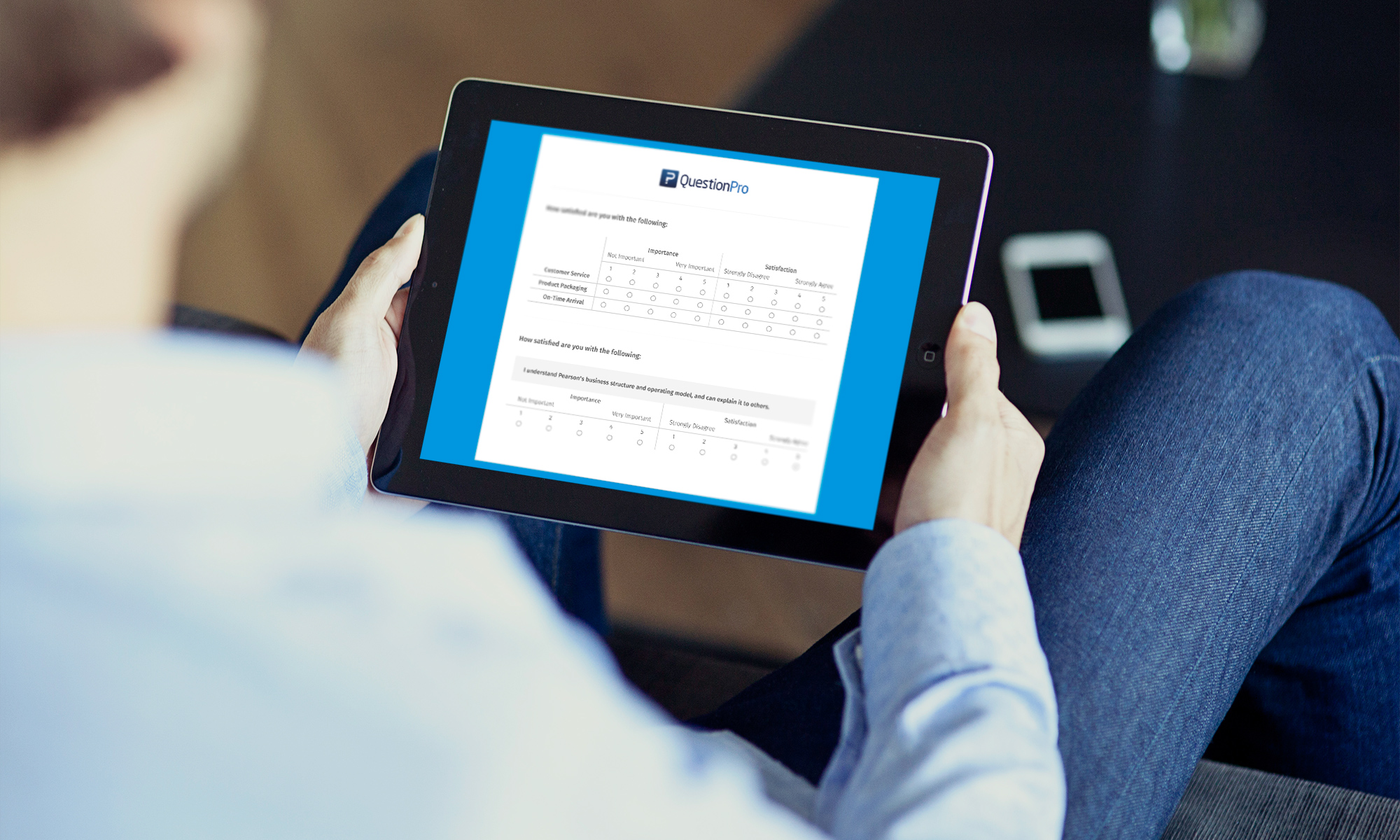 Reading Time: 4 minutes read
Reading Time: 4 minutes readOne of the standard features offered by QuestionPro’s online survey software is a wide variety of scales that you can use to measure customer response.
At a first glance all the different scales that might seem similar and easily replaceable by each other. However, as you study them in depth, you realize the diversity of their natures and differences in their uses and their findings. There are over 20 different types of scales that are used by researchers in online surveys. They can be categorized in two classes – comparative scales and non-comparative scales.
There are a number of factors you might consider when deciding on which scales to incorporate in a questionnaire and which ones to use while analyzing data. Some of the factors are:
- The type of data that is required from the respondent – ratio, interval, ordinal or nominal.
- How the information will be used once it is acquired.
- Number of divisions in the scale – odd or even.
- Types of statistical analysis methods to be used after data is acquired.
LEARN ABOUT: Research Process Steps
- The physical form of the scale – vertical, linear, horizontal, etc.
- Details to be provided in the scale as labels.
- Whether or not response to a question is mandatory.
Since non-comparative scaling techniques are easier and simpler to understand, we’ll introduce to you the most important four scales. You’ll be delighted to see how easy it is to understand and use them. Those who already know about it them are encouraged to comment on the post and let us know any tips that might further help our readers in using these scales.
1. Graphic Rating Scale

2. Likert Scale
A Likert scale typically contains an odd number of options, usually 5 to 7. One end is labeled as the most positive end while the other one is labeled as the most positive one with the label of ‘neutral’ in the middle of the scale.
The phrases ‘purely negative’ and ‘mostly negative’ could also have been ‘extremely disagree’ and ‘slightly disagree’.
3. Semantic Differential Scale (Max Diff)
A semantic differential scale is a combination of more than one continuum. It usually contains an odd number of radio buttons with labels at opposite ends. Max Diff scales are often used in trade-off analysis such as conjoint.
MaxDiff analysis can be used in new product features research or or even market segmentation research to get accurate orderings of the most important product features. Discriminate among feature strengths more effectively than derived importance methodologies. Like other trade-off analyses, the analysis derives utilities for each of the most important product features which can be used to derive optimal products, using market segmentation to put respondents into groups with similar preference structures, or to prioritize strategic product goals.
You can have your respondents perform Forced-choice nature of the tasks, and disentangle the relative feature importance in cases where average Likert-style ratings might all have very similar ratings.
4. Side-by-Side Matrix
Another very commonly used scale in questionnaires is the side-by-side matrix. A common and powerful application of the side-by-side matrix is the importance/satisfaction type of question.
First, ask the respondent how important an attribute is, then ask them how satisfied they are with your performance in this area. QuestionPro’s logic and loop functions also allow you to run through this question multiple times with other alternatives that the respondent might consider. This yields benchmark data that will allow you to compare your performance against other competing alternatives.
Here is an example of data from an importance/satisfaction question. The importance rating is the line and the performance ratings are the bars. With this type of data, you can actually see where your company needs to increase its efforts to more closely meet the needs of the customer.
While there are many online survey tools and online survey software to choose from, you’ll find that not all of them have these different types of scales available to them.
As you’re designing your survey, be sure to offer a variety of scales. Using different scales in your survey will engage the respondent more fully and prevent them from clicking the highest, lowest or middle rating all the time. Another benefit to using different kinds of scales in your survey is that each scale provides you a unique perspective on the data that you are analyzing.
You can also find best alternatives of Conjoint.ly for your business.
Before designing your survey, review the different types of scales and question types inside of your online survey tool and be sure to pick the one that will best help you make your decision.

























[…] Here’s an excerpt I found really interesting. Unfortunately if you want the references, you’ll have to ask the author. […]